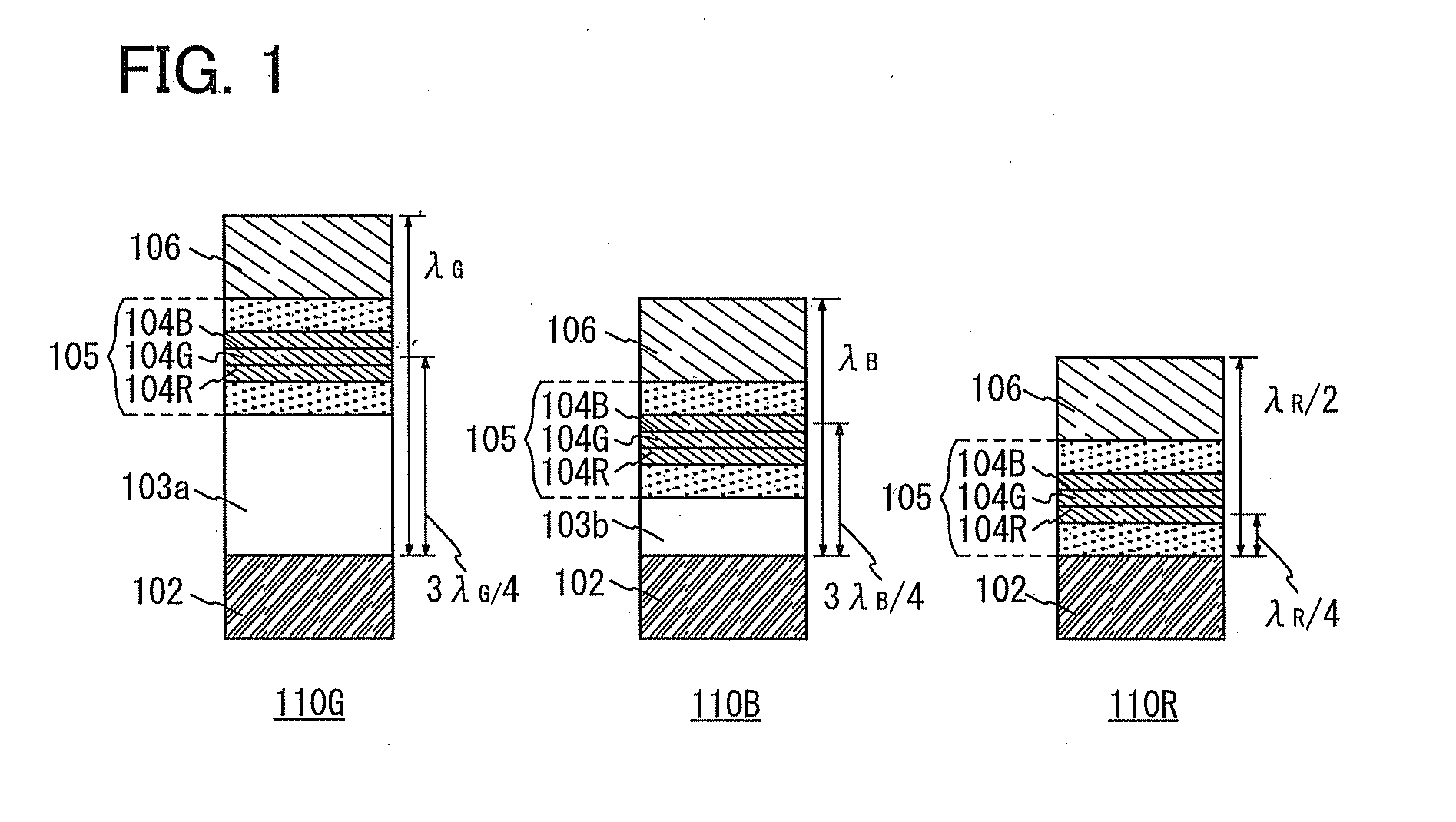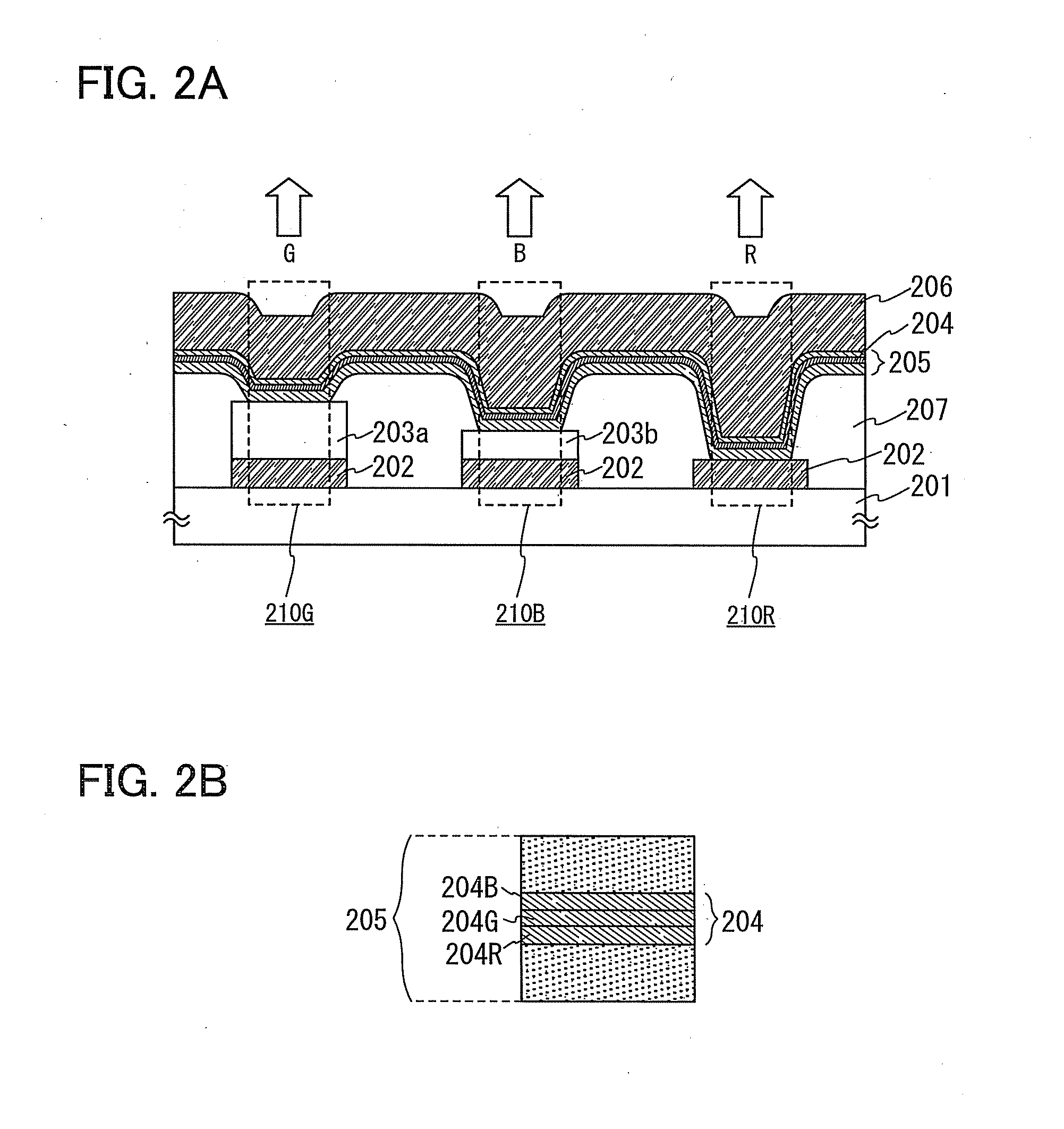Light-Emitting Device, Electronic Appliance, and Lighting Device
a technology of light-emitting devices and lighting devices, which is applied in the direction of light-emitting devices, semiconductor devices for light sources, organic semiconductor devices, etc., can solve the problems of increasing the number of masks, the difficulty of adjusting the distance between the electrodes, and the color purity of some pixels, so as to achieve high light-extraction efficiency, cost reduction, and favorable color purity
- Summary
- Abstract
- Description
- Claims
- Application Information
AI Technical Summary
Benefits of technology
Problems solved by technology
Method used
Image
Examples
embodiment 1
[0035]In this embodiment, a light-emitting device according to one embodiment of the present invention will be described with reference to FIG. 1. Note that hereinafter, an optical path length represents the thickness of a component.
[0036]As illustrated in FIG. 1, the light-emitting device according to one embodiment of the present invention includes light-emitting elements (a first light-emitting element (G) 110G, a second light-emitting element (B) 110B, and a third light-emitting element (R) 110R) having different structures.
[0037]The first light-emitting element (G) 110G has a structure in which a first transparent conductive layer 103a; an EL layer 105 including a first light-emitting layer (R) 104R, a second light-emitting layer (G) 104G, and a third light-emitting layer (B) 104B in part; and a semi-transmissive and semi-reflective electrode 106 are sequentially stacked over a reflective electrode 102. The second light-emitting element (B) 110B has a structure in which a secon...
embodiment 2
[0052]In this embodiment, a specific structure of the light-emitting device according to one embodiment of the present invention, which is described in Embodiment 1, will be described with reference to FIGS. 2A and 2B.
[0053]A light-emitting device described in this embodiment includes a first light-emitting element (G) 210G in which a reflective electrode 202, a first transparent conductive layer 203a, an EL layer 205 including a light-emitting layer 204, and a semi-transmissive and semi-reflective electrode 206 are sequentially stacked over a substrate 201; a second light-emitting element (B) 210B in which the reflective electrode 202, a second transparent conductive layer 203b, the EL layer 205 including the light-emitting layer 204, and the semi-transmissive and semi-reflective electrode 206 are sequentially stacked over the substrate 201; and a third light-emitting element (R) 210R in which the reflective electrode 202, the EL layer 205 including the light-emitting layer 204, an...
embodiment 3
[0097]In this embodiment, a structure of a light-emitting element included in a light-emitting device according to one embodiment of the present invention will be described with reference to FIG. 3. Note that hereinafter, an optical path length represents the thickness of a component.
[0098]As illustrated in FIG. 3, the light-emitting device according to one embodiment of the present invention includes light-emitting elements (a first light-emitting element (G) 310G, a second light-emitting element (B) 310B, and a third light-emitting element (R) 310R) having different structures.
[0099]The first light-emitting element (G) 310G has a structure in which a first transparent conductive layer 303a; an EL layer 305 including a first light-emitting layer (Y) 304Y and a second light-emitting layer (B) 304B in part; and a semi-transmissive and semi-reflective electrode 306 are sequentially stacked over a reflective electrode 302. The second light-emitting element (B) 310B has a structure in w...
PUM
 Login to View More
Login to View More Abstract
Description
Claims
Application Information
 Login to View More
Login to View More - R&D
- Intellectual Property
- Life Sciences
- Materials
- Tech Scout
- Unparalleled Data Quality
- Higher Quality Content
- 60% Fewer Hallucinations
Browse by: Latest US Patents, China's latest patents, Technical Efficacy Thesaurus, Application Domain, Technology Topic, Popular Technical Reports.
© 2025 PatSnap. All rights reserved.Legal|Privacy policy|Modern Slavery Act Transparency Statement|Sitemap|About US| Contact US: help@patsnap.com



